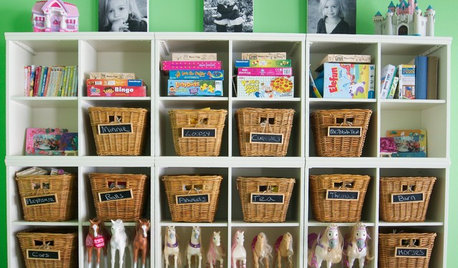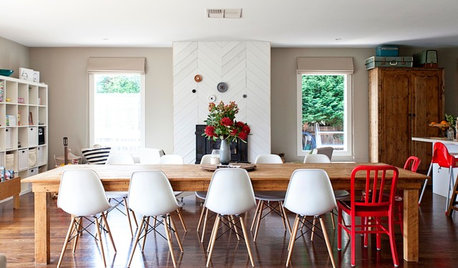Root like groth in my bin after new bedding mix
joe_thurston
11 years ago
Related Stories

ARCHITECTURERoots of Style: Do You Live in a Minimalist Traditional House?
Cottages, bungalows, farmhouses ... whatever you call them, houses in this style share several characteristics. See how many your house has
Full Story
FEEL-GOOD HOMERejuvenate Your Home With Deep-Rooted Traditions
Give the subtle energies and spiritual side of your home some attention, and watch newfound calm and beauty blossom
Full Story
HOUZZ TOURSHouzz Tour: Georgia Peach Grows California Roots
Southern Glamour and Bay Views Combine in Lush San Francisco Home
Full Story
FRONT YARD IDEASBefore and After: Front Lawn to Prairie Garden
How they did it: Homeowners create a plan, stick to it and keep the neighbors (and wildlife) in mind
Full Story
DECLUTTERINGTame the Toy Chaos: Bin Storage for All
New project for a new year: With bins, totes and shelves, a clutter-free playroom can be yours
Full Story
GARDENING GUIDESHouzz TV: Make a Worm Bin for Rich Soil and Happy Plants
A worm-powered compost bin that can fit under a sink turns food scraps into a powerful amendment for your garden. Here’s how to make one
Full Story
DISASTER PREP & RECOVERYHouzz Tour: Family Rebuilds Home and Community After Hurricane Sandy
This restored coastal New Jersey house — now raised 9 feet off the ground — offers inspiration for neighbors considering a return
Full Story
KITCHEN OF THE WEEKKitchen of the Week: The Calm After the Storm
Ravaged by Hurricane Sandy, a suburban New York kitchen is reborn as a light-filled space with a serene, soothing palette
Full Story
GARDENING GUIDESAfter-Summer Care for a Fabulous Fall Garden
Cleaning out stragglers and taking time to assess will keep your garden thriving all through autumn
Full Story
MY HOUZZMy Houzz: After Renovating, a Family Flips Over Its House
What started as a 'buy, renovate and flip' project turns into so much more for a creative family in Australia
Full StorySponsored
More Discussions






joe_thurstonOriginal Author
bamboo_rabbit
Related Professionals
Maple Valley Landscape Architects & Landscape Designers · Saint Louis Park Landscape Architects & Landscape Designers · Alamo Landscape Contractors · Elmhurst Landscape Contractors · Manhattan Landscape Contractors · Pleasanton Landscape Contractors · San Carlos Park Landscape Contractors · Secaucus Landscape Contractors · Tuscaloosa Landscape Contractors · Bellingham General Contractors · Coffeyville General Contractors · Dallas General Contractors · Fort Salonga General Contractors · Janesville General Contractors · Norman General Contractorsjoe_thurstonOriginal Author
bamboo_rabbit
sbryce_gw
equinoxequinox
JerilynnC
joe_thurstonOriginal Author
joe_thurstonOriginal Author
joe_thurstonOriginal Author
JerilynnC
User